Research and Conservation in Southern Sonora, Mexico
Selected Wildlife of the Alamos Region
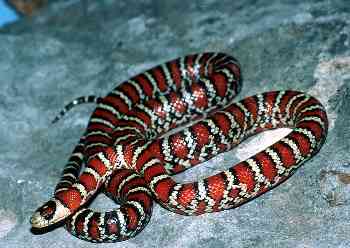 There have been few formal surveys of the animals of southern Sonora. although Desert Museum biologists and their colleagues are currently involved in photo inventories in the Yecora area. Animals are often encountered during plant surveys and documented with color images. Sometimes these observations are interesting ecological or distributional records. Local residents are interviewed about the local fauna and Spanish common names whenever the opportunity arises.
There have been few formal surveys of the animals of southern Sonora. although Desert Museum biologists and their colleagues are currently involved in photo inventories in the Yecora area. Animals are often encountered during plant surveys and documented with color images. Sometimes these observations are interesting ecological or distributional records. Local residents are interviewed about the local fauna and Spanish common names whenever the opportunity arises.
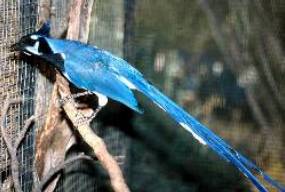 Click for a gallery of TDF specialists |
Tropical deciduous forest endemics: TDF supports a wonderfully diverse fauna ranging from the charismatic tigre (= jaguar, Felis onca; Caire 1978, Brown and López 2001, Schwalbe and Lowe 2000), black-throated magpie jay (Calocitta colliei), lilac-crowned and white-fronted parrots (Amazona finschi, A. albifrons; Russell 2000, Russell and Monson 1998) to a myriad of insects and other invertebrates including a freshwater crab (Pseudothelphusa sonorensis) and a prawn (Macrobrachius sp.). Interesting reptiles in tropical deciduous forest include the clouded anole (Anolis nebulosus), Sinaloan milk snake (Lampropeltis triangulum sinaloae), filetail ground snake (Sonora aemula), indigo snake/babatuco (Drymarchon corais), Mexican short-tailed snake (Sympholis lippiens), blunthead tree snake (Imantodes gemmistratus), the Mexican moccasin/ pichecuate/cantíl (Agkistrodon bilineatus; Van Devender and Conant 1990), and Mexican west coast rattlesnake (Crotalus basiliscus). The nine-banded armadillo (Dasypus novemcinctus) reaches its northwestern distributional limits in TDF.
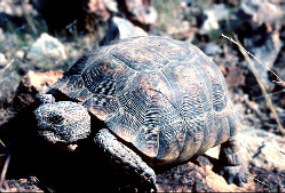 Click for a gallery of tropical generalists |
The northern range limits of some TDF animals such as the thornscrub hook-nosed snake (Gyalopion quadrangularis) and the brown vine snake (Oxybelis aeneus) are at 1160 to 1650 meters elevation in desert grassland/oak woodland transition in the mountains of southern Arizona west of Nogales (Van Devender et al. 1994). Some animals like the Mexican subspecies of the Virginia opossum/tlacuache (Didelphis virginiana californicus) that are widespread in tropical northwestern Mexico have expanded their ranges northward onto Arizona in the last 60 years (Hoffmeister 1986).
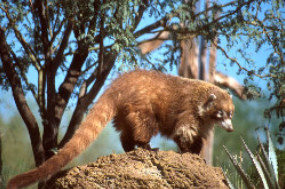 Click for a gallery of cold-tolerant tropical animals |
Cold-tolerant tropical animals: A surprising number of warm-loving tropical animals have been seen at higher, colder elevations in the Yécora region of the Sierra Madre Occidental in eastern Sonora. Many of these may also occur in the mountains east of Alamos, but the area is little known. To be sought are: spotted box turtle (Terrapene nelsoni), green rat snake (Senticollis triaspis), and neotropical whipsnake (Masticophis mentovarius). The west Mexican coral snake (Micrurus distans) and the western coral snake (Micruroides euryxanthus) also occur in oak woodland/grassland near Maycoba. The barking frog (Eleutherodactylus augusti) as well as coatimundi (cholugo, chulo, solitario, Nasua narica), ringtail (Bassariscus astutus), and collared peccary/jabalí (Tayassu tajacu) that were seen up to pine-oak forest at 2200 m elevation on Mesa del Campanero (Davis 1982, Harris 1985, Hofmeister 1986) may also occur above tropical deciduous forest in the Alamos area.
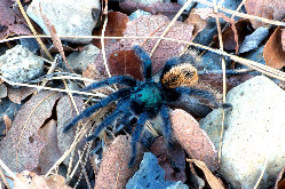 Click for a gallery of montane fauna |
Woodland and forest fauna: A number of animals are primarily found in the woodlands and forests of the Sierra Madre Occidental above the tropical lowlands. Some of them are Mexican species while others also occur in the Madrean sky island ranges in southeastern Arizona, or are more widespread in the southwestern United States. The pine-oak salamander (Pseudoeurycea bellii sierraoccidentalis) is a very rare salamander described from about 21 km west-southwest of Yécora old the old road to Santa Ana (Lowe et al. 1968, Van Devender et al. 1989a, 1989b). Other Sierran animals include the Madrean green tarantula (Aphonopelma moorei; Smith 1994), Mexican PLateau toad (Bufo occidentalis), Mexican toad (B. microscaphus mexicanus), mountain treefrog (Hyla wrightorum), Sierra Madre horned lizard (Phrynosoma orbiculare), short-horned lizard (P. hernandesi), Madrean alligator lizard (Elgaria kingii), bunchgrass lizard (Sceloporus slevini), striped plateau lizard (S. virgatus), and four-lined skink (Eumeces callicephalus).
Other species that are common in the Sierra Madre Occidental in western Chihuahua and eastern Sonora are widespread to the north in montane or other habitats. The Mexican gartersnake (Thamnophis eques) is found Oaxaca north to southeastern Arizona and adjacent New Mexico. The mountain kingsnakes (Lampropeltis pyromelana) brightly-colored red or orange montane snakes whose color patterns are quite variable locally and geographically, complicating the recognition of subspecies (Tanner 1983, Woodin, no date). Some species like the gopher (Pituophis catenifer) are widespread across the continent with many geographical subspecies, including ones in the Sierra Madre (Lowe and Van Devender 1977).
Rattlesnakes are always fascinating. The forests and woodlands of the Sierra Madre Occidental and the Madrean Sky island mountains in northeastern Sonora and southeastern Arizona are well known rattlesnake hotspots. The dark brown Madrean black-tailed rattlesnake (Crotalus molossus nigrescens) is the large víbora de cascabel in the Sierra Madre in eastern Sonora and western Chihuahua. The small montane species of rattlesnakes (Crotalus lepidus, C. pricei, and C. willardi) are called chichámoras in the Yécora area in eastern Sonora.










